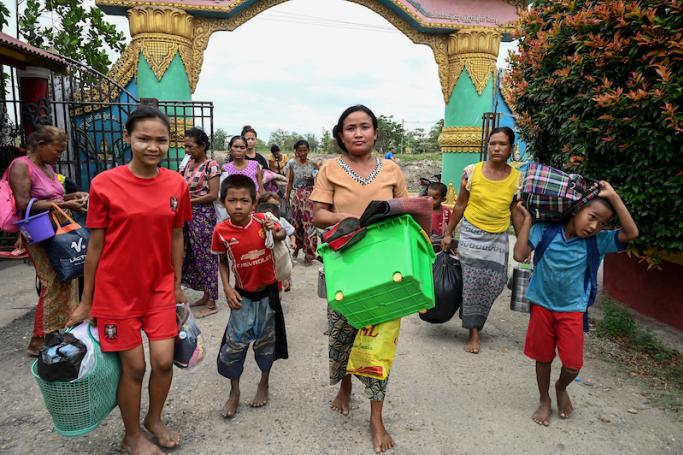Myanmar is far better placed today as Cyclone Mocha approaches than back in 2008 with Cyclone Nargis.
Today, we have far better communications, emergency procedures and a mobile phone in the hands of most Myanmar citizens that keeps them up to date with warnings about the impending threat – a cyclone with winds of up to 100 miles an hour coupled with heavy rain and storm swell.
Myanmar’s authorities dropped the ball in 2008. Despite advance warnings about the danger posed by Cyclone Nargis, the authorities did little or nothing to warn people or help evacuate them from vast swathes of the country. The horrific death toll ended up at about 138,373 with massive destruction of homes, farms and the slaughter of livestock.
Today, all relevant players – including the Myanmar junta authorities – need to jump in to help prevent another horrific disaster.
Even if Cyclone Mocha proves to be less destructive than Nargis, it is better to overreact to protect people than wait.
Cyclone Mocha is predicted to make landfall on Sunday near the Bangladesh-Myanmar border, according to India's meteorological office, packing winds of up to 108 miles per hour. The office predicted a storm surge of between six to eight feet for the low-lying coastal region. Residents of low-lying villages in Myanmar's Rakhine are flocking to take shelter in safer areas.
How should people respond? As a USA advisory puts it when referring to major storms and hurricanes, if you are in doubt - evacuate. When it comes to hurricanes and storms with winds of 100 miles an hour and more, they are not worth gambling your life on. They can be deadly and destructive.
Cyclone Nargis was a serious blot on Myanmar’s history. The message of Nargis was “never again” but it is unclear just how prepared the authorities and humanitarian actors are in putting emergency action plans into operation.
The authorities and main humanitarian players need to rally resources to move people to safety and prepare for the up-coming devastation and humanitarian crisis. All the stakeholders need to work together and coordinate their efforts to safeguard the people who are likely to be affected.
Rather than waiting, an urgent call on a regional and international level needs to be made now at speed to prepare for the fallout.
Here is an important fact. Cyclone Mocha poses a two-fold threat. Firstly, there is the danger posed by the actual storm with high winds, rain and sea and river swell that threatens people, livestock, and infrastructure, including the homes of potentially millions of people. Secondly, the challenge will be to provide emergency aid, including food, water, medicine and shelter now but also after Cyclone Mocha is spent, the mop-up phase being as important to deal with as the prevention of damage to life and limb.
Let’s not forget - the Cyclone Nargis response failed on both scores.
This time round there is a glimpse of light but proof will be in how relief efforts are rolled out. The Myanmar humanitarian Emergency Response Preparedness Plan has been activated nationwide since the start of the week, according the United Nations OCHA. Humanitarian organizations, especially in Rakhine, have ramped up their preparedness efforts and have been pre-positioning personnel and supplies wherever possible. Preparedness is also being stepped up in the northwest. OCHA is said to be engaging with all relevant stakeholders to ensure timely and unimpeded access to those in need.
Across Rakhine and the northwest, there are already about six million people in need of humanitarian assistance and 1.2 million people displaced, even before the cyclone hits, OCHA points out, noting that an urgent injection of funds is desperately needed to facilitate a full-scale response to the Cyclone and any subsequent flooding.
The World Food Programme (WFP) says it is gearing up for a large-scale emergency response, putting in place contingency plans, and prepositioning food and relief supplies, vehicles, and emergency equipment. In Myanmar, WFP has pre-positioned enough food to cover the needs of more than 400,000 people in Rakhine State and neighbouring areas for one month. Anticipating interruptions to transport and telecommunications services, WFP teams are also putting in place systems to serve the broader humanitarian community with their preparations and potential response to the cyclone.
Hand-in-hand with food, medicine and shelter comes the importance of communication. A crucial element in responding to Cyclone Mocha is information transparency and effective media reporting to keep Myanmar people – and the international community - informed about developments and to highlight the key challenges, but without unnecessarily frightening people or allowing misinformation to sully the social media space.
Cyclone Mocha is on our doorstep. Are we adequately prepared?












